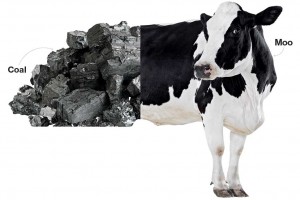Australian Economy Changes as Exports to China Slow
< < Go Back
The Chinese will buy less coal and iron ore from Australia, but the country can rely more on farming and tourism.
For 20 years, Australians have lived in an economic bubble. As other countries endured financial crises, property crashes, and dot-com busts, a generation of Aussies grew up without experiencing a recession.
China is a big reason for that economic resilience. Australia sailed through its toughest challenge, the global financial crisis, thanks largely to China’s appetite for mined-in-Australia iron ore, coal, and other minerals. China is Australia’s No. 1 trading partner, accounting for more than a third of its exports.
The protection offered by the China trade is showing some wear and tear. Exports to China dropped 4 percent in the quarter ended in July, as growth in the Chinese economy slowed. Prices for iron ore are at five-year lows, affected in part by China’s slumping construction industry, while prices for all commodities from Australia have dropped 12 percent this year.
On Sept. 15 the Chinese government proposed restrictions on the ash content of coal to clean the noxious air in Beijing and other cities. The new policy bans sales and imports of coal with more than 16 percent ash, which is the residue that’s left over after a power plant burns coal. China imported 42.5 million tons of Australian coal last year, the Australian Bureau of Statistics says, much of it exceeding the new limit. Although mining giant Rio Tinto (RIO) says the change should have little effect, the policy shift “puts Australian export coal at serious risk,” says the Institute for Energy Economics and Financial Analysis, a market researcher in Cleveland.
While the jobless rate in the U.S. has been gradually falling, Australia’s unemployment rate has been heading in the other direction, climbing to 6.1 percent in August from 5.1 percent two years ago.
The economy is partly reinventing itself in response. Mining companies such as Rio Tinto, Fortescue Metals (FSUGY), and Hancock Prospecting have diversified into cattle ranching as a hedge against drops in mineral prices.
Australia is also becoming an economy driven partly by real estate. The Reserve Bank of Australia, the central bank, last year cut interest rates to a low of 2.5 percent, down from 4.75 percent in 2011. That’s helped fuel a rise in property values in Sydney, Melbourne, and other cities where housing prices have jumped as much as 16 percent in the past year.
Low rates have helped drive down the Australian dollar, which has lost 14 percent of its value since the start of 2013. The strong currency, which peaked in mid-2011, had hammered the non-mining sectors of the economy.
The Aussie dollar has since weakened enough to provide “a whole range of support to other parts of the economy,” such as agriculture, education, and tourism.
And despite the recent drop in Chinese demand, China trade is not ruined forever. China will remain reliant on coal for much of its power generation, says Rohan Kendall, an analyst with Wood Mackenzie. “The question for Chinese policymakers is … how we use coal more cleanly.”
More From Bloomberg Businessweek:




